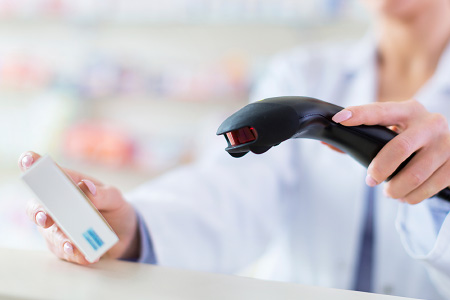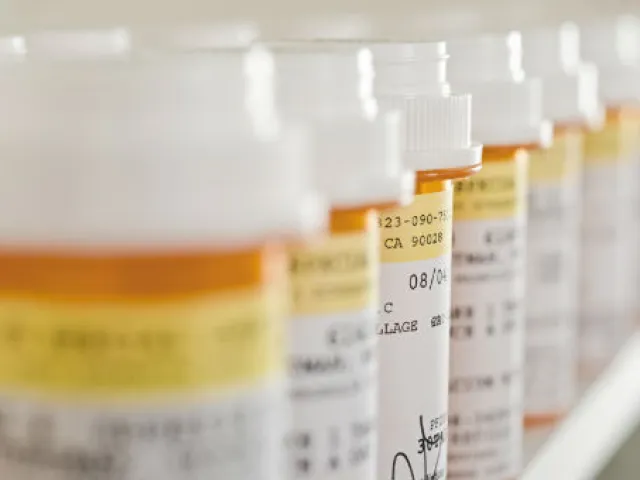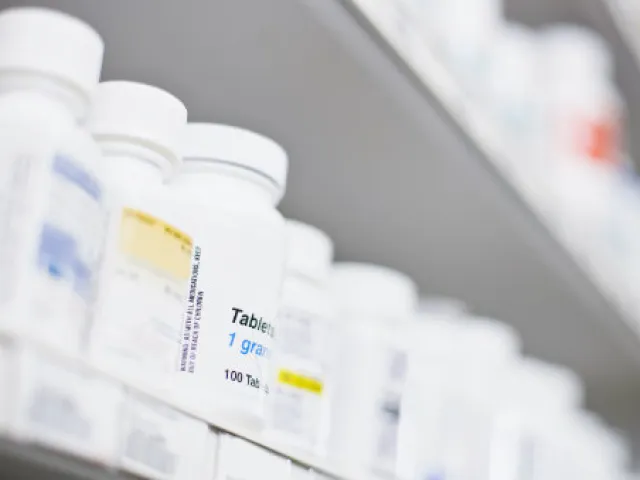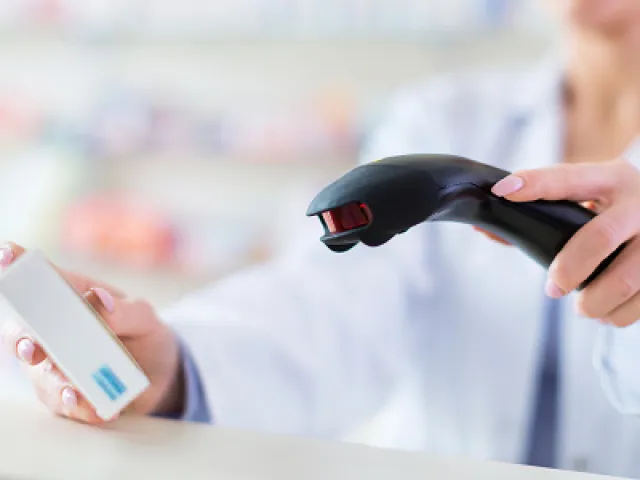Table of contents
With the November 2020 Drug Supply Chain Security Act (DSCSA) requirements for dispensers now in effect, it is the perfect time for pharmacies—from large retail chains to hospitals—to assess their compliance strategies in preparation for the new regulations. But, even more value awaits those companies that see the DSCSA requirements as the foundation to a fully digital supply chain and are using their compliance initiatives as an opportunity to transform their business practices.
DSCSA compliance requirements—from lot-level traceability to full serialized data exchange—are potential building blocks for this digital transformation, from improved inventory visibility to enabling new processes like digital recalls that ultimately protect patients. With that strategic framework in mind, you can begin to move your organization from a compliance-based mindset to a value-based mindset: in addition to ensuring DSCSA compliance, you're also creating the opportunity to improve operational efficiency, recognize financial savings, and reduce waste within your supply chain ecosystem, all while improving drug safety for your patients.
DSCSA requirements for dispensers
Before you think about your longer-term goals, it's important to be clear on the DSCSA requirements and how they impact your current operation. By now, you should be well acquainted with the first wave of DSCSA requirements in 2015, which ushered in lot-level traceability requirements, including the following key responsibilities for dispensers:
- Ensuring you only do business with authorized trading partners.
- Accepting covered prescription products only if accompanied by product tracing documentation—transaction history (TH), transaction information (TI), and transaction statement (TS), collectively referred to as the T3.
- Receiving, storing, and providing the T3 for no less than 6 years.
- Investigating and properly handling suspect products and illegitimate drugs, including quarantining and notifying the FDA and trade partners they purchased the drug from in the event the product is deemed illegitimate.
As of November 27, 2020, dispensers are required to only buy and sell products encoded with product identifiers, or, serialized product. This means that each saleable unit must include, in both human- and machine-readable format, the following information:
- GTIN (Global Trade Number Identifier) including NDC
- Serial number
- Lot number
- Expiration date
- 2D data matrix barcode
The 2020 regulation also ushers in new verification requirements for dispensers related to serialized product: In the event of an inquiry, the dispenser must begin an investigation for suspect or illegitimate product. The law requires the dispenser to verify the unique product identifier back to the manufacturer of at least three packages or 10% of the suspect product, whichever is greater, and provide the transaction history and transaction information for those products.
While seemingly straightforward, meeting these requirements can add substantial value—or burden—to your business, depending on your approach. This is particularly true if you are building long-term strategy with an eye on 2023, when full electronic data exchange of serialized product information and package-level verification will be required under the law.
Enabling supply chain digitalization through serialization
When you step back and look at the bigger picture, you'll find that your approach to DSCSA requirements can create clear opportunities to transform your operations from a manual, resource intensive, transactional approach to a digitally-optimized strategy where verification, product visibility, and data exchange can happen in a fraction of a second.
Here are five areas you can explore where digitalization can both achieve compliance and add value to your pharmacy over a more manual approach:
- Connecting systems and partners: A key component of DSCSA is end-to-end visibility throughout the supply chain, as well as ensuring you are only accepting product from authorized trade partners. At the very least, dispensers need to have a way to receive T3s from their immediate downstream partners, and digital information exchange can eliminate errors and inefficiencies with manual, paper-based documentation. But there are other times—like drug recalls or suspect product investigations—where you will need to communicate with a much broader network of stakeholders in a short period of time. A digital network of authorized, verified trading partners can facilitate rapid communication and ensure you are only doing business with trusted entities.
- Capturing product data: As of 2020, you can only accept serialized product in your pharmacy. While visual verification may seem like a low-cost approach, from a business value and risk-management approach it may leave you with some questions, such as how much product should you inspect, how will you track that data, and how can you prove compliance? But, the benefits of a digital scanning solution are clear: you can reduce manual record-keeping and error-prone data entry; capture and verify product data upon receipt; record and store "artifacts" that demonstrate compliance; and turn your receiving operations into a new source of value—a digital data repository.
- Storing data: What does that data repository do for your business? For one, unlike paper-based documentation, it's quick and easy to access and share compliance documentation with trading partners and government regulators when there is a suspect product investigation, recall, or request for information. But beyond that, your data repository can also provide vastly improved visibility into your inventory, which you can use to anticipate shortages, prevent stock outs, and ensure that your pharmacies have the products they need when they need them.
- Verifying product authenticity: As mentioned previously, in the event of a product inquiry, the law requires dispensers to take very specific steps to verify the product identifier back to the manufacturer. If you have standard operating procedures for scanning serialized product as part of your pharmacy receiving operation, it's likely that you'll have this information immediately available to you in an easy-to-share digital format. If not, you'll need to have a plan for how you will address such inquiries, including allowing for the time and resources to collect this information manually and provide it to stakeholders in a compliant fashion.
- Informing your business: The true value of your pharmacy’s digital transformation will come in the form of new business opportunities you can create based on the data you collect. New and improved analytics can affect everything from streamlined business processes to enterprise inventory visibility to reduced costs throughout your operations. But most importantly, it will be the most efficient path to improving drug safety and keeping illegitimate products out of the supply chain, safeguarding both your patients and your brand.
The transition to a digital model for your pharmacy operations won’t happen overnight. That’s why it is important to start thinking about this framework now. Which digital capabilities will bring the most value to your organization? What are the first steps you can take to move your standard operating procedures from a manual to a digital approach? Whether your initial goal is to reduce costs, establish a risk-based approach to compliance, or to respond quickly to recalls, initial investments in digitalization will have long-lasting benefits.
The TraceLink digital network
TraceLink is the world's largest integrated supply network, enabling digitalization and compliance strategies across the life sciences supply chain, from manufacturers to distributors to pharmacies. TraceLink's network includes more than 269,000 hospital and pharmacy trading partners and includes more than 280 hospital and more than 50 retail pharmacy customers.
Every day, these thousands of hospital and pharmacy locations rely on the TraceLink network to exchange and validate transaction documentation, protect patients from counterfeit drugs, and adhere to legal requirements. Contact TraceLink to learn more about our solutions for Healthcare and Pharmacies.
Article originally published June 2019. Updated June 2021.







